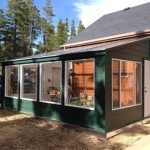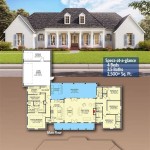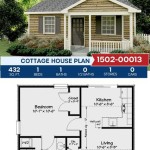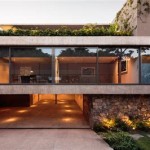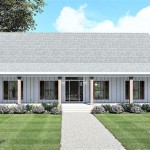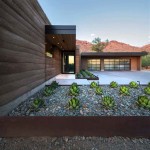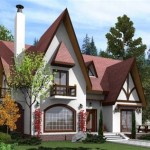Acadian Style House Plans On Piers: A Comprehensive Guide
Acadian style architecture represents a unique blend of French colonial, Caribbean, and American influences. Originally developed in the Louisiana region of the United States, this architectural style has evolved and adapted over time, becoming a popular choice for homeowners seeking a blend of historical charm and modern functionality. One notable adaptation is the construction of Acadian style houses on piers, a technique often employed in areas prone to flooding or where elevated views are desired.
This article delves into the specifics of Acadian style house plans designed for pier foundations. It will explore the key characteristics of the Acadian style, the advantages of pier foundations, and the design considerations crucial for successfully integrating these elements. It will also discuss the materials, construction techniques, and aesthetic features that contribute to the enduring appeal of Acadian homes built on piers.
Key Characteristics of Acadian Style Architecture
Understanding the core elements of Acadian design is essential before exploring how these characteristics translate to houses on piers. The style is recognized by several defining features, often contributing to a sense of warmth, simplicity, and connection to the natural surroundings. Some of these features include.
*Steeply Pitched Roofs:
Acadian homes commonly feature steeply pitched roofs, often gabled or hipped. This design element is not merely aesthetic. The steep pitch facilitates efficient water runoff, a practical advantage in regions with heavy rainfall, and creates ample attic space. Depending on the design and span of the roof structure, trusses may be implemented to achieve desired design and avoid interior structural support components. *Wide Overhanging Eaves:
Overhanging eaves are another prominent feature, providing shade and protecting exterior walls from the elements. These eaves often extend significantly beyond the walls, contributing to the characteristic deep porches that are integral to Acadian architecture. Design overhang depth with consideration to solar orientation to maximize efficiency for shading the sun in the summer, while allowing it in during winter. *Covered Porches:
Covered porches are perhaps the most recognizable feature of Acadian homes. These porches, often running the length of the front or wrapping around multiple sides of the house, offer outdoor living spaces protected from sun and rain. Wide, welcoming porches encourage social interaction and provide a transition zone between the interior and exterior. Porch design factors should include furniture layout, as this will indicate how much depth will be adequate. *Simple, Rectangular Floor Plans:
Acadian houses typically have simple, rectangular floor plans that emphasize functionality and efficient use of space. This straightforward design approach contributes to the overall sense of order and harmony that defines the style. Layout is most often based on a central corridor, which is an important design element, to create flow and connection between spaces. *Dormers:
Dormers are frequently incorporated into Acadian roofs, adding visual interest and providing additional light and ventilation to the attic space. These features also can provide added area in upper floor spaces for bedrooms and living areas. *Use of Natural Materials:
Acadian architecture emphasizes the use of natural materials, such as wood, brick, and stone. These materials contribute to the style's inherent warmth and connection to the environment. Traditional homes used Cypress and Pine for siding and structure, with brick and stone foundations.Advantages of Building Acadian Style Houses on Piers
Constructing an Acadian style house on piers offers several advantages, particularly in specific geographical locations and contexts. These benefits extend beyond the aesthetic appeal, offering practical solutions to environmental challenges and lifestyle preferences. Foundations on piers have to be thoroughly designed by a qualified, experienced professional to ensure stability and longevity. Some of the key advantages are.
*Flood Protection:
In coastal areas or regions prone to flooding, raising the house on piers provides a crucial level of protection against water damage. Elevating the structure above the potential flood line can significantly reduce the risk of costly repairs and property loss. In flood prone zones, piers can be designed to break away during an extreme flood event to prevent the water from causing the home to be swept away. *Improved Ventilation:
The space beneath the house, created by the pier foundation, allows for improved ventilation. This can help prevent moisture buildup and reduce the risk of mold and mildew growth, contributing to a healthier indoor environment. Foundation vents are installed to increase airflow beneath the home, which is an essential component of the design. *Enhanced Views:
Elevating the house on piers can provide enhanced views of the surrounding landscape. This is a significant advantage in areas with scenic vistas, such as coastal properties or homes situated on hillsides. In some regions, this may only be a small improvement compared to a slab on grade, but every bit helps. *Reduced Site Disturbance:
Pier foundations typically require less excavation than traditional slab or basement foundations. This can reduce site disturbance and environmental impact, making them a more sustainable option in sensitive areas. Less land grading and tree removal can be a positive impact on the surrounding environment. *Access to Utilities:
The space beneath the house on piers provides easy access to utilities, such as plumbing and electrical wiring. This can simplify maintenance and repairs, as well as future upgrades. These utilities must be carefully planned to ensure longevity.Design Considerations for Acadian Style House Plans on Piers
Designing an Acadian style house on piers requires careful consideration of several factors, ranging from structural integrity to aesthetic coherence. The integration of the pier foundation with the overall design aesthetic is crucial for achieving a successful and harmonious outcome. A qualified professional will be able to design the home to adequately provide the structural integrity needed to withstand the forces of nature, while maintaining design aesthetics. Important design considerations include.
*Structural Engineering:
The structural design of the pier foundation is paramount. The piers must be adequately sized and spaced to support the weight of the house and withstand wind and seismic forces. Soil conditions must be carefully evaluated to determine the appropriate foundation design. Soil boring samples are taken from the site and tested for compaction and shear strength. *Materials Selection:
The choice of materials for the piers and decking is critical. Durable, weather-resistant materials, such as treated lumber, concrete, or steel, are essential to ensure the long-term stability and integrity of the foundation. A maintenance plan should be implemented to ensure they last the life of the home. *Accessibility:
Careful consideration must be given to accessibility, particularly for persons with disabilities. Ramps or elevators may be required to provide access to the elevated living space. Exterior stair design may also need to be accounted for to ensure appropriate safety protocol. *Integration with the Porch:
The design of the porch should seamlessly integrate with the pier foundation. The porch can be supported by the piers themselves, creating a cohesive and visually appealing appearance. Design and material choices should be congruent to maintain this cohesion. *Skirting:
Skirting, often made of brick or lattice, can be used to enclose the space beneath the house, concealing the piers and providing a more finished look. This feature can also help protect utilities from the elements. *Aesthetic Consistency:
Maintaining aesthetic consistency with the Acadian style is crucial. The design should incorporate the characteristic features of the style, such as steeply pitched roofs, wide overhanging eaves, and simple rectangular floor plans. Material selections must maintain the authentic nature of the design.Beyond these key areas, there are also several other factors to consider when designing Acadian style house plans on piers. These include the orientation of the house on the site, the placement of windows and doors to maximize natural light and ventilation, and the integration of landscaping to enhance the overall aesthetic appeal. Consideration to the home's orientation related to the path of the sun is essential to maximize efficiency for heating and cooling.
Ultimately, the success of an Acadian style house on piers lies in the careful balance of functionality, aesthetics, and structural integrity. By paying close attention to the key characteristics of the style, the advantages of pier foundations, and the crucial design considerations, homeowners can create a beautiful and resilient home that reflects the enduring appeal of Acadian architecture. As with any construction project, this design must be adapted for each site in consideration of site conditions and local code requirements.

Acadian House Plans Style Home

Acadian Elevated Style Homes Carriage House Plans
:strip_icc()/GettyImages-591359527-2-5fb85e64ebe34f20aca00858f8947658.jpg?strip=all)
What Is An Acadian Style House

Acadian House Plans Style Home

Acadian House Plans Style Home

Acadian Southern Style Homes

Wonderful Acadian Country Style House Plan 8779 Walnut Grove

Acadian House Plans Style Home
:strip_icc()/75269536_569572500572921_202291259539171556_n-548d6b1d9d1e4a9eb82089c87dbb4013.jpg?strip=all)
What Is An Acadian Style House

Elevated Piling And Stilt House Plans Coastal From Home

